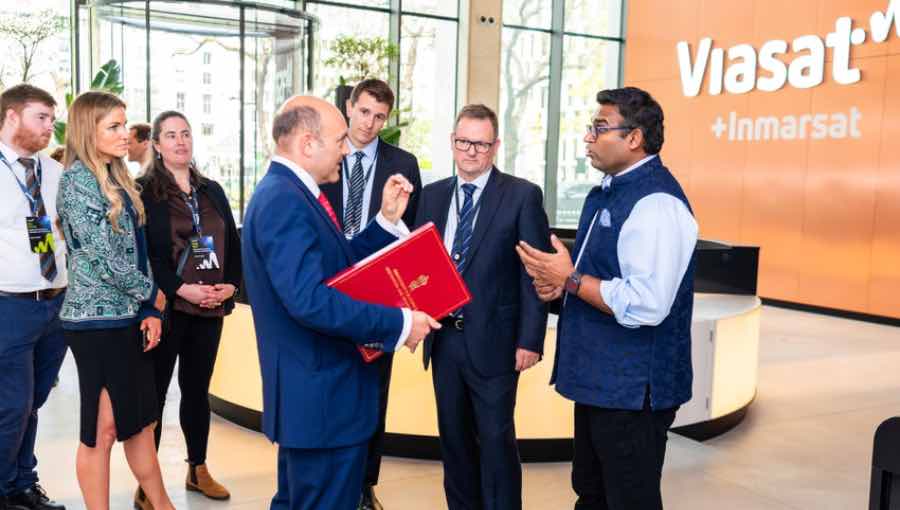
During the inauguration of Viasat's new international headquarters in London, President Guru Gowrappan showcased direct-to-device (D2D), space-to-space, and multi-orbit communications as prominent emerging technologies in the satellite industry.
While these innovations present numerous opportunities, they also come with challenges, including environmental concerns.
The establishment of the new headquarters signifies a significant milestone in the integration process following Viasat's acquisition of Inmarsat, which was announced in 2021 and finalized in 2023.
The new headquarters houses the UK network operations center and a state-of-the-art satellite control center, offering satellite, network, and cybersecurity services to customers worldwide. The previous center will continue to serve as a backup facility until its closure later this year. Additionally, the new headquarters features an innovation lab dedicated to exploring future technology applications.
Regarding D2D, Viasat has partnered with Skylo, a startup specializing in transmitting narrowband (NB) IoT signals via satellite. This partnership enables the connectivity of industrial IoT devices in remote areas. Furthermore, integration of satellite communications into mobile handset chips extends support for the solution to new smartphones.
Yasrine Ibnyahya, Senior Director for Advanced Concepts and Technologies at Inmarsat, emphasized that leveraging existing geostationary satellites eliminates the need for additional investments in infrastructure. This approach allows the company to utilize its deployed satellites for core applications such as maritime security, mobility, and humanitarian initiatives.
To read the complete article, visit Light Reading.